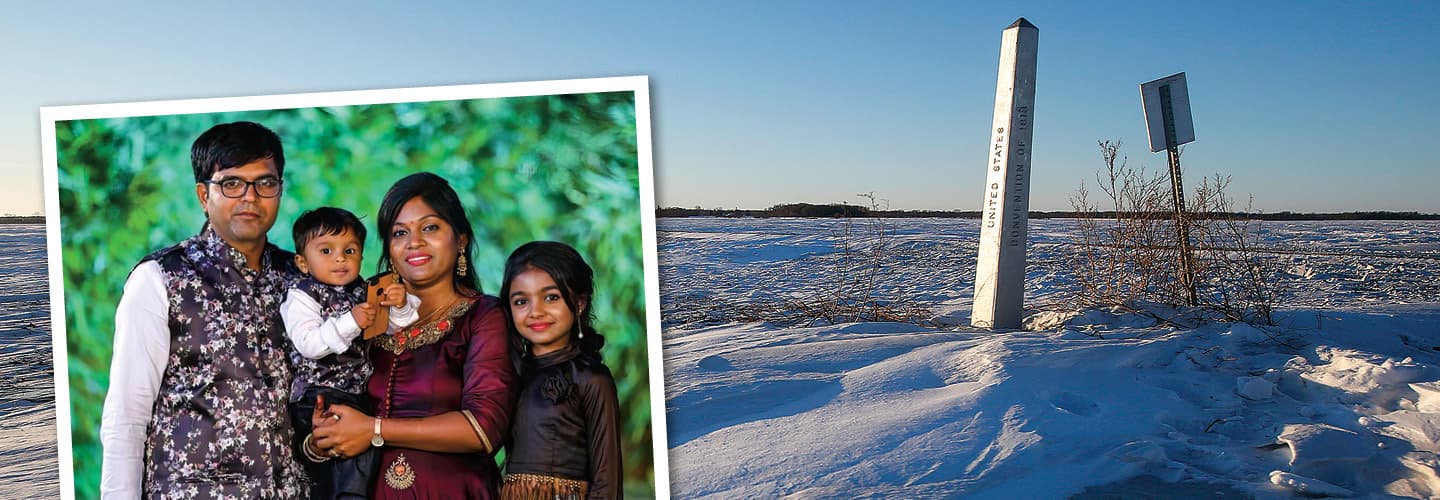The air temperature was pushing 20 below zero, and bitter winds were whipping up blinding snow one morning last January when U.S. Border Patrol agents in North Dakota spotted five human forms moving through the barren borderland where America and Canada meet.
They were migrants from India: exhausted, disoriented, and determined to reach the United States along one of its most desolate frontiers. They’d been trudging through knee- to waist-deep snow for 11 hours in whiteout conditions; two had to be rushed to a hospital.
But what felt like a heroic rescue quickly turned ominous when agents discovered that a family with children was still out there somewhere in the blizzard. An urgent search involving drones, a plane, all-terrain vehicles, and agents on both sides of the border led to the discovery several hours later of the ice-encased bodies of a family of four, lost in the snow just 15 yards short of America.
One morning last January, the air temperature was 20 below zero in North Dakota. The winds brought blinding snow. The U.S. Border Patrol agents saw five human forms walking through the deserted borderland between America and Canada.
They were migrants from India. They were exhausted and disoriented. They were trying to reach the United States. They’d been walking in the storm through deep snow for 11 hours. Two were taken to a hospital.
It felt like a brave rescue. But it quickly turned bleak. Agents discovered that a family with children was still out there somewhere in the blizzard. An urgent search started; it involved drones, a plane, all-terrain vehicles, and agents on both sides of the border. That led to the discovery, several hours later, of the frozen bodies of a family of four. They had gotten lost in the snow, just 15 yards away from America’s border.

